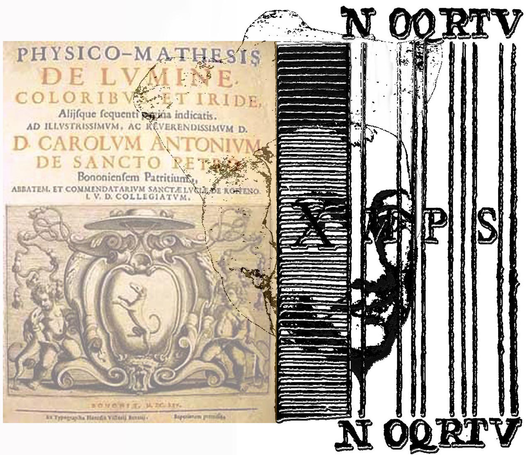Franciscus Grimaldi1613–1663
Light, according to Descartes, acted like a mechanical force which is transmitted through transparent media. His theory of light attracted much criticism in his day because of the inconsistencies it embraced. On the one hand he argued that light was propagated instantly, and on the other that it varied its velocity according to the density of the medium through which it travelled. An alternative approach was to make analogies between light and sound: the propagation of sound was analysed in terms of waves and a similar approach was suggested for light. The nature of light itself was much debated, and new phenomena were enlisted to support its wave or corpuscular characteristics. For example, Grimaldi added diffraction to the classical divisions of direct propagation of light (optics), its reflection (catoptrics) and refraction (dioptrics). In his book on light published two years after his death, Grimaldi (1665) demonstrated the phenomenon of diffraction by partially blocking sunlight passing through two small apertures: bands of colour could be seen in the shadow area. Grimaldi is portrayed together with his diagram of refraction, taken from his book De Lumine. In this book he wrote: “Light can be considered analogous to a liquid which can also spread out in waves, namely, when it passes round an object”. This was to prove a stimulating speculation that was developed by Huygens and Young.
